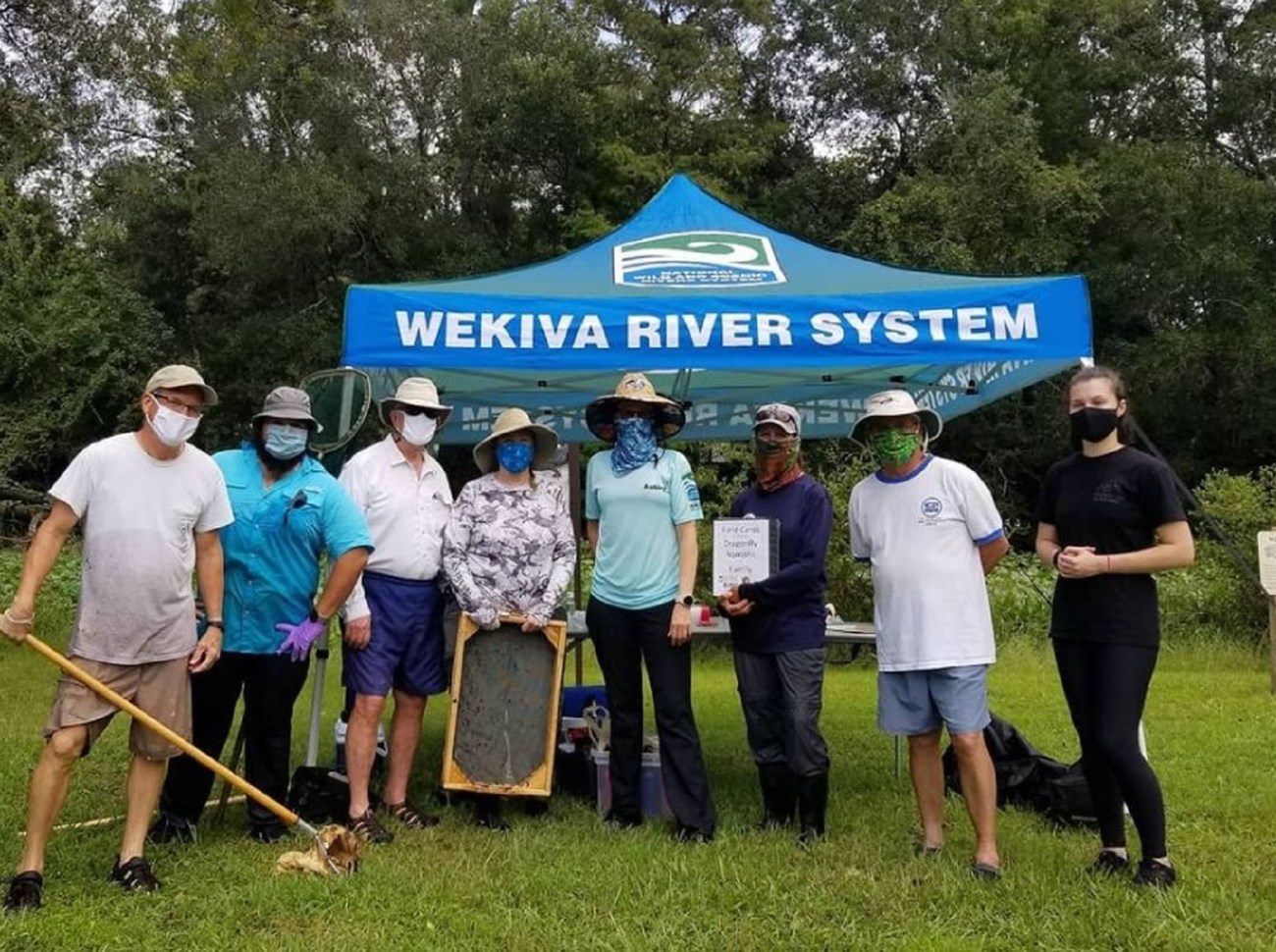Last updated: October 29, 2020
Article
Conservation & Outreach | The Wekiva River Dragonfly Mercury Project
The Wekiva Wild and Scenic River brings conservation to caring locals through its community (citizen) science project, the Dragonfly Mercury Project. This nationwide program enlists the help of community scientists to learn more about mercury in waterways, such as the Wekiva. Mercury is harmful because it can act as deadly neurological poison that accumulates up the food chain of water ecosystems. Mercury is currently listed as a water quality impairment on the Wekiva.
Friends of the Wekiva River help engage community members through the Dragonfly Mercury Project by inviting them out to take samples that will help provide a baseline picture of mercury levels in the Wekiva. The Project engages community scientists, including local students and teachers, in the collection of juvenile dragonflies, also known as dragonfly nymphs or larvae.

Dragonfly larvae are an essential part of the riverine food web, which makes them an effective monitoring tool. Because they eat a lot of smaller insects and even small fish, dragonfly larvae are high on the aquatic invertebrate food chain. Each time a predator eats prey with mercury inside, they accumulate that toxin too. With toxins that persist in tissue, such as mercury, increasing levels may be found as you go higher in the food chain due to ingestion - a process called biomagnification. The toxin biomagnifies because the mercury from prey lower in the food web incrementally increases in concentration in predators that eat them, until the predators higher in the food web have considerably more mercury. Dragonfly larvae accumulate mercury, and then are consumed by those higher, including many birds and fish. Those fish and birds are then eaten by other fish, birds, and mammals. Mercury in the larvae, therefore, can tell us if there is a risk of contamination to humans and other animals even higher on the food chain.
Ashley Konon leads the Dragonfly Mercury Project for the Wekiva River. Even this year the group has found successful ways of holding safe sampling efforts. This year was the first time that River Network and the NPS provided Wild and Scenic Community Watershed Science Funding to nonprofit groups conducting community watershed science on NPS affiliated Wild and Scenic Rivers. The Wekiva was awarded these grant monies to conduct these Dragonfly Mercury Project efforts.
This educational video from the Wekiva’s youtube channel also highlights the Dragonfly Mercury project.
It is the hope of the Wekiva River partners that continued monitoring of the Wekiva’s mercury loads will help better preserve, protect, and manage Florida’s only Partnership Wild and Scenic River.
You can follow the Wekiva Facebook page and Instagram for more updates on the Dragonfly Mercury Project.
